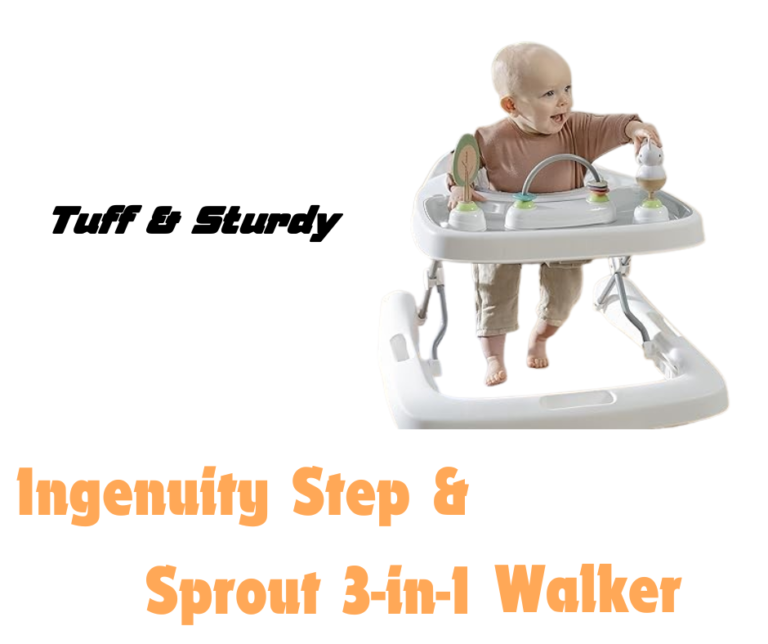Table of Contents
- Introduction
- Overview of Baby Walkers and Activity Centers
- Benefits of Baby Walkers
- Benefits of Activity Centers
- Safety Considerations
- Factors to Consider When Choosing
- Conclusion
Introduction
As babies grow and become more curious about their surroundings, parents often look for safe, engaging ways to encourage their development. Baby walkers and activity centers are popular choices, but deciding between them can be challenging. Each option offers unique benefits and considerations. This guide will help parents choose the best option to suit their baby’s needs and their family’s lifestyle.

Overview of Baby Walkers and Activity Centers
Baby Walkers: Typically designed with a seat and wheels, baby walkers allow babies to move around while being supported. Walkers are popular for promoting movement, helping babies develop their leg muscles as they push themselves forward.
Activity Centers: Activity centers, on the other hand, are stationary, allowing babies to bounce, swivel, and play with built-in toys, sounds, and textures. These centers often promote sensory engagement and hand-eye coordination without encouraging mobility.
Benefits of Baby Walkers
- Encourages Movement: Baby walkers give little ones the freedom to explore by pushing themselves forward. This movement can strengthen leg muscles and improve balance as they learn to navigate their surroundings.
- Promotes Physical Development: Walkers can support early motor skill development, particularly for babies who are keen to move but not yet walking on their own.
- Entertainment and Engagement: Most walkers come with interactive trays or toys to keep babies entertained while they move.
- Note: Baby walkers are suitable for babies who can sit up unassisted, typically between 4 to 16 months.
Benefits of Activity Centers
- Promotes Cognitive and Sensory Development: Activity centers are equipped with various toys, sounds, and textures to engage babies’ senses and help them learn cause and effect through interactive play.
- Stationary and Safe: Activity centers are designed to remain stationary, offering a safe environment for babies to play without the risks associated with mobility.
- Encourages Fine Motor Skills: The toys in activity centers help babies develop fine motor skills and hand-eye coordination as they reach, grasp, and manipulate objects.
- Note: Activity centers are ideal for babies around 4 to 12 months who are still exploring their surroundings and enjoy sensory play.
Safety Considerations
Baby Walkers:
- Risk of Tipping or Rolling: Due to the walker’s mobility, there’s a risk of babies rolling into unsafe areas like stairways or tipping over if they move too quickly.
- Always Supervise: If using a baby walker, adult supervision is essential. Block access to staircases and any dangerous areas.
Activity Centers:
- Limited Mobility Risks: Since activity centers are stationary, they are generally considered safer than walkers, as babies are less likely to encounter hazards.
- Ensure Stability: Look for activity centers with a wide, stable base to prevent tipping.
Factors to Consider When Choosing
- Age and Developmental Stage: Consider your baby’s current stage of development. Walkers are great for babies eager to move, while activity centers are suitable for sensory exploration.
- Available Space: If you have limited space or an open floor plan, an activity center might be easier to accommodate, as it doesn’t require as much space as a mobile walker.
- Supervision Availability: Walkers require close supervision due to mobility risks, so they may not be ideal for busy parents. Activity centers can be a safer alternative if you need something more secure.
- Desired Developmental Focus: If your focus is on building motor skills and leg strength, a walker could be beneficial. However, if you’re more interested in cognitive and sensory development, an activity center is better suited.
- Safety Features: Ensure any product you choose meets safety standards, with features like a wide, stable base (for activity centers) and anti-slip or locking wheels (for walkers).

Conclusion
Choosing between a baby walker and an activity center ultimately depends on your child’s developmental needs, your space, and the level of supervision you can provide. Walkers are ideal for babies ready to explore movement, while activity centers cater to those focused on sensory engagement and fine motor skills. By considering these factors, parents can choose the right option to provide a safe, stimulating, and fun environment for their baby’s growth.


